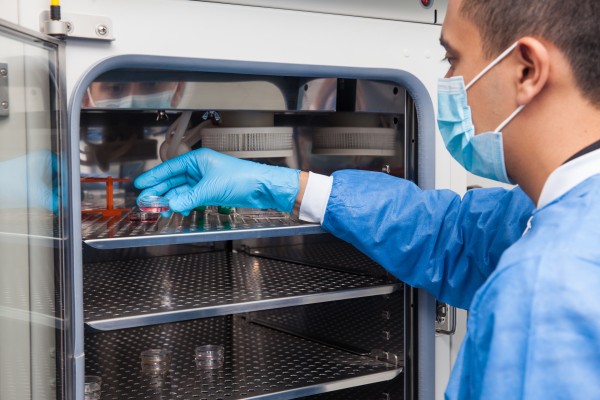Understanding RTD Tolerance Classes: From Class B to High Accuracy Calibration

Certain industrial processes hinge on precise temperature control. A fraction of a degree can spoil a biotech culture or push a refinery column off target. Resistance temperature detectors (RTD) provide stable, repeatable readings, but only when you select the right tolerance class.
This article explains how IEC 60751 defines the three common classes: B, A and AA. It also shows how Reotemp’s high accuracy calibration pushes performance further. The idea is simple: matching your probe’s tolerance class to the demands of the job protects both your temperature budget and your product quality.
Key Takeaways
- IEC 60751 sets three RTD classes: AA, A and B. Each uses a formula that combines a fixed error term with a temperature-scaled term.
- Class B is the workhorse (±0.30 °C + 0.005 |t|). Classes A and AA cut allowable error by roughly forty to sixty-five percent over the same range.
- For 0 to 50 °C (32 to 122 °F) you can specify a 1/10 DIN element or Reotemp’s AC High Accuracy calibration to reach ±0.20 °C (±0.36 °F).
- Accuracy gains depend on the whole loop: wiring, transmitter accuracy and installation must also meet tight tolerances.
Why RTD Tolerance Matters
Each tolerance class sets a limit on interchangeability error, the largest deviation a probe’s resistance-temperature curve may have from the ideal IEC reference curve. In simple terms, it defines how far the indicated temperature of any sensor in that class can drift from the true temperature. It also shows the maximum difference you can expect between any two sensors in the same class. When two probes meet the same class limit you can swap them without trimming the transmitter or retuning the controller. This practice reduces downtime, cuts spare parts inventory and keeps control loops stable.
Tip: Budget for the whole loop. Probe tolerance, lead-wire resistance, transmitter drift and display accuracy add together. Tightening one link while ignoring the others rarely improves final product quality.
IEC 60751 Tolerance Formulas
The IEC 60751 standard sets error limits at any temperature t (°C). Each formula includes a constant offset term and a temperature‑scaled slope term, so the allowable error limit grows as you move farther from the ice point. Interchangeability error is the worst-case difference between the probe reading and the reference curve. Use the formula for each class to check that the loop meets its accuracy budget at every critical set point.
| Class | Formula (±°C) | Limit at 0 °C (±°C/°F) | Why choose |
|---|---|---|---|
| AA | 0.10 + 0.0017 |t| | 0.10 °C / 0.18 °F | Calibration baths and precision test rigs |
| A | 0.15 + 0.0020 |t| | 0.15 °C / 0.27 °F | High value batches and sanitary systems |
| B | 0.30 + 0.0050 |t| | 0.30 °C / 0.54 °F | General plant loops and utility duties |
Sample Deviations at Common Set-Points
The table below shows how each class tightens or relaxes its allowable error at popular set points. It highlights how error increases with temperature, and how Classes AA and A hold tighter limits than the workhorse Class B.
| Temperature (°C) | Class AA (±°C) | Class A (±°C) | Class B (±°C) |
|---|---|---|---|
| −190 | 1.25 | 1.25 | 1.25 |
| −100 | 0.27 | 0.35 | 0.80 |
| −50 | 0.19 | 0.25 | 0.55 |
| 0 | 0.10 | 0.15 | 0.30 |
| 50 | 0.19 | 0.25 | 0.55 |
| 100 | 0.27 | 0.35 | 0.80 |
| 200 | 0.44 | 0.55 | 1.30 |
| 300 | 0.75 | 0.75 | 1.80 |
| 500 | 2.80 | 2.80 | 2.80 |
Table 1 – IEC 60751 maximum interchangeability error for ferrule-mounted platinum RTDs.
When to Specify Class A or Class AA
Class B still suits most industrial loops. Hygienic processes, high-value batch production and tight environmental chambers benefit from the narrower error band of Class A or AA.
Pushing Beyond the Standard: 1/10 DIN and Reotemp “AC” Calibration
If you need sub-0.25 °C (0.45 °F) accuracy, select a 1/10 DIN element or Reotemp’s AC (High Accuracy) option. Each probe is calibrated in a metrology bath. A certificate lists unique coefficients and, if you request it, those values ship pre-programmed in the transmitter.
Note: AC-calibrated probes hold their tight curve from −196 °C (−321 °F) to 419 °C (786 °F). Standard classes stop at 500 °C (932 °F).
Installation and System Design Tips
- Match transmitter accuracy to probe accuracy.
- Use four-wire connections or integral transmitters to cancel lead error.
- Shield and ground wiring to block electrical noise.
- Immerse the element at least fifteen times its diameter to avoid stem effect.
FAQ
What does “|t|” mean in the formula?
It is the absolute value of the temperature in degrees Celsius. Use 100 or −100; the result is the same.
Does Class AA always beat Class A?
Only inside its rated span, −100 to 150 °C. Outside that range, the probe reverts to Class B limits.
How does 1/10 DIN relate to IEC 60751?
It sets error at roughly one-tenth of Class B, but only from 0 to 50 °C.
Can I mix tolerance classes in one loop?
You can, but total uncertainty defaults to the least accurate part, often the transmitter.
